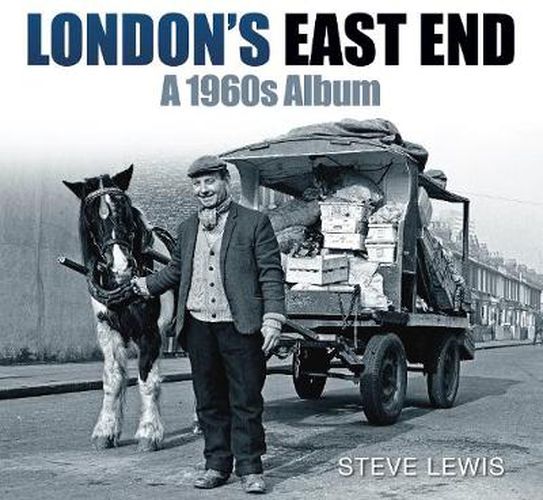Readings Newsletter
Become a Readings Member to make your shopping experience even easier.
Sign in or sign up for free!
You’re not far away from qualifying for FREE standard shipping within Australia
You’ve qualified for FREE standard shipping within Australia
The cart is loading…






The photographs in this book capture the gritty reality of life in East London during the Swinging Sixties. As the images graphically illustrate, the pop revolution and the early stirrings of flower power had little discernible impact on the working-class Cockney. East Enders were preoccupied with other concerns: widespread poverty, poor housing, industrial unrest and racial tension. The area proved fertile ground for news-gatherers, among them Steve Lewis, destined to become a distinguished national newspaper photographer. In the 1960s, he covered the ‘manor’ for the local press and picture agencies. On quiet days, Lewis focused on the disappearing vignettes of street life: the milkman straining under the weight of his Edwardian handcart; the rag-and-bone man plodding the streets with his horse-drawn wagon; the bicycle-borne totter with sign proclaiming: ‘Complete Homes Purchased’. Many of the locations in which Lewis worked have changed beyond recognition. Tower blocks supplanted swathes of Blitz-scarred terraces; docklands was recast as the capital’s alternative commercial hub. Now the site of the 2012 Olympics offers new vistas. As the old fabric of the East End was consigned to memory, so were many of its traditions. Here is a glimpse of the way it was
$9.00 standard shipping within Australia
FREE standard shipping within Australia for orders over $100.00
Express & International shipping calculated at checkout
The photographs in this book capture the gritty reality of life in East London during the Swinging Sixties. As the images graphically illustrate, the pop revolution and the early stirrings of flower power had little discernible impact on the working-class Cockney. East Enders were preoccupied with other concerns: widespread poverty, poor housing, industrial unrest and racial tension. The area proved fertile ground for news-gatherers, among them Steve Lewis, destined to become a distinguished national newspaper photographer. In the 1960s, he covered the ‘manor’ for the local press and picture agencies. On quiet days, Lewis focused on the disappearing vignettes of street life: the milkman straining under the weight of his Edwardian handcart; the rag-and-bone man plodding the streets with his horse-drawn wagon; the bicycle-borne totter with sign proclaiming: ‘Complete Homes Purchased’. Many of the locations in which Lewis worked have changed beyond recognition. Tower blocks supplanted swathes of Blitz-scarred terraces; docklands was recast as the capital’s alternative commercial hub. Now the site of the 2012 Olympics offers new vistas. As the old fabric of the East End was consigned to memory, so were many of its traditions. Here is a glimpse of the way it was